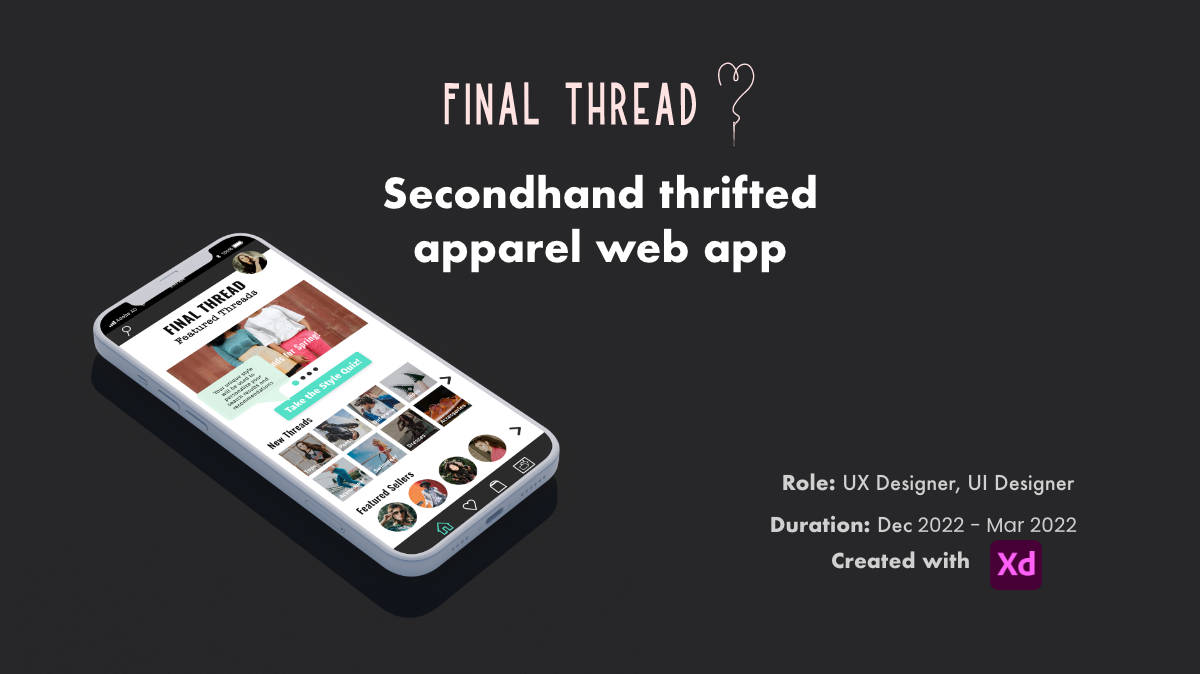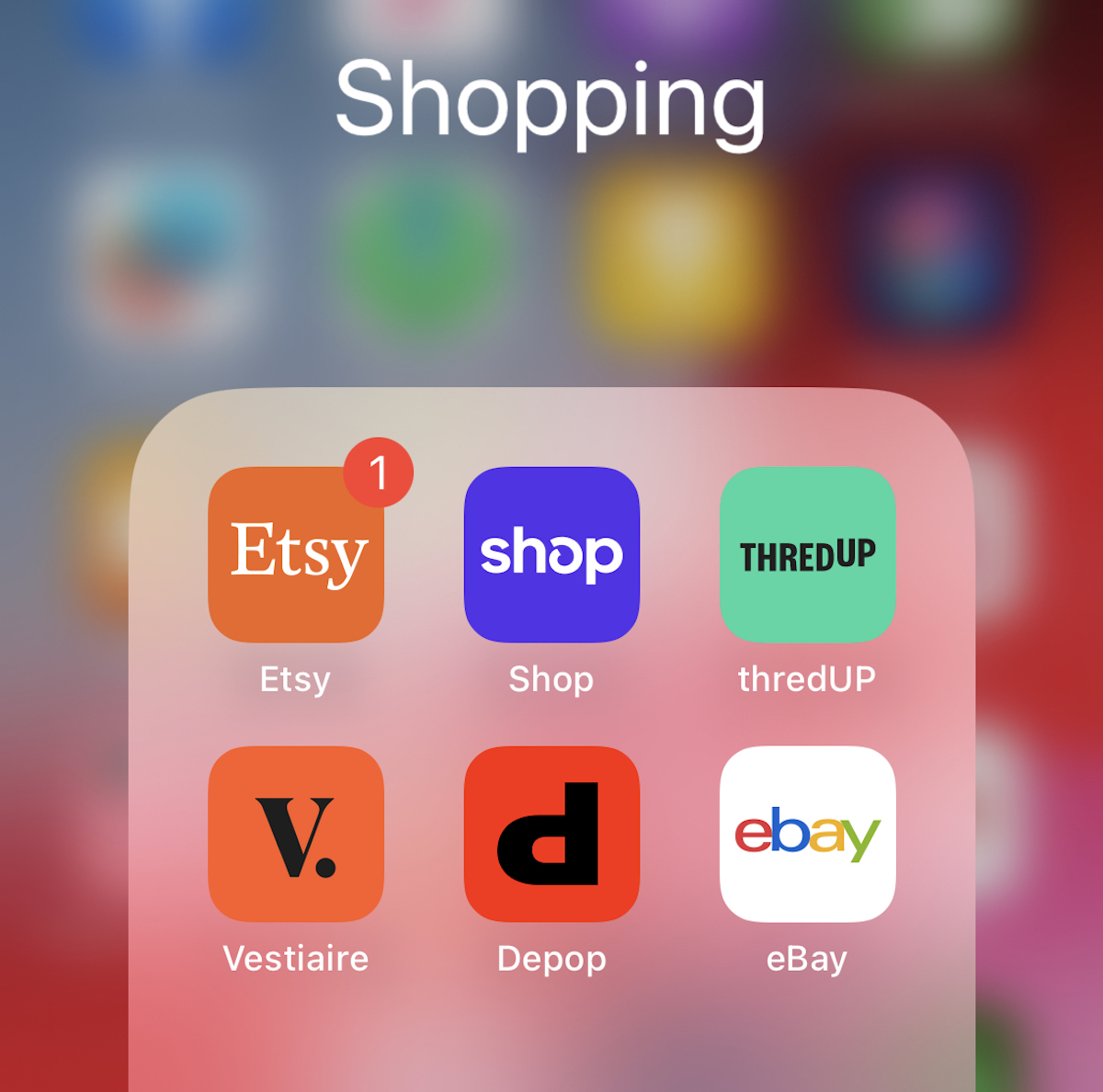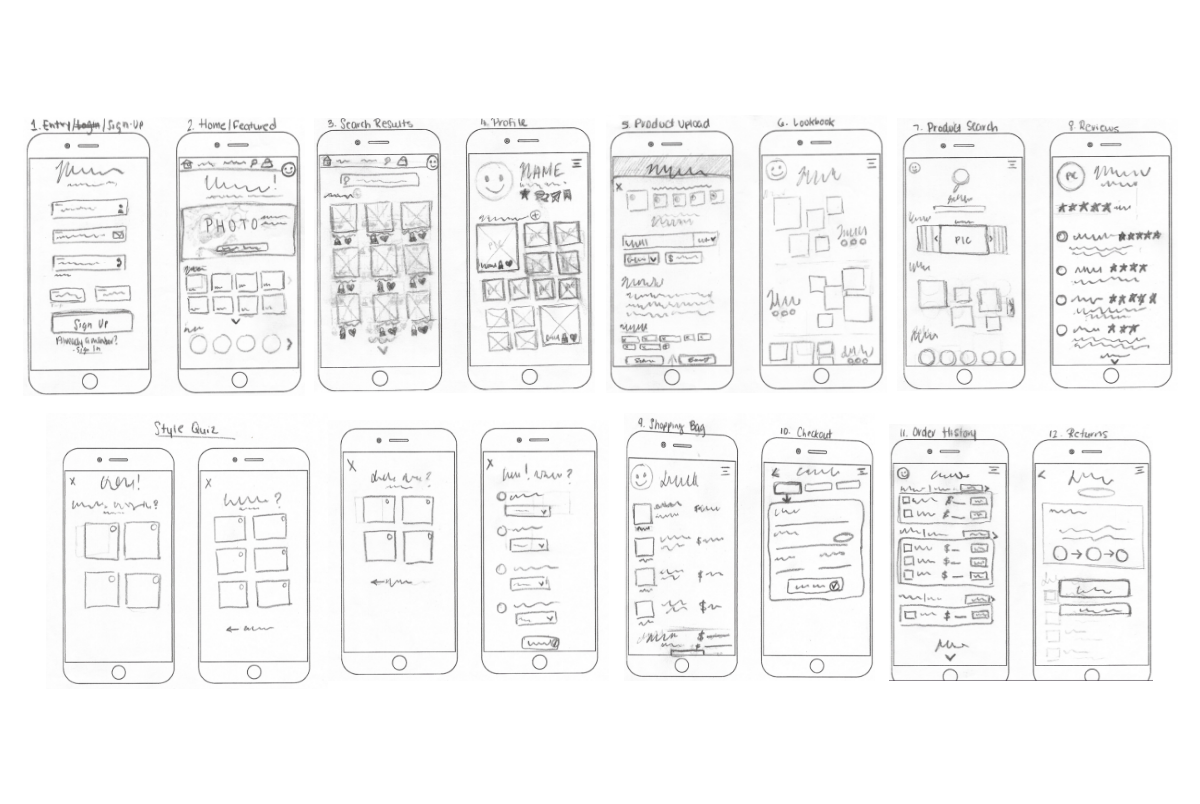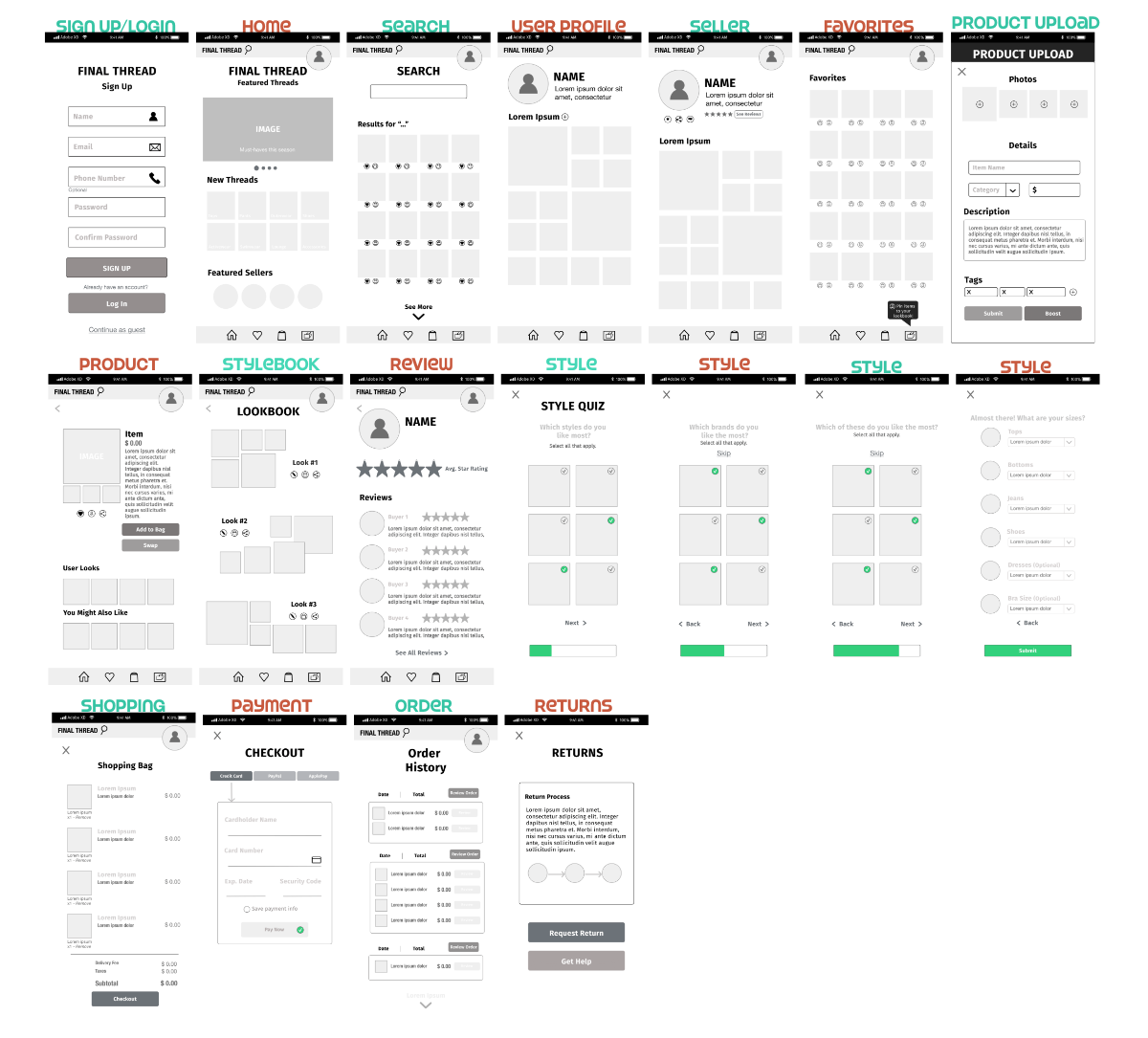Final Thread
- Jump to:
- Case Study

The project objective was to design the UI for the mobile version of a vintage clothing sales app. The defined target audience is primarily 25 to 34 year olds who want to buy and sell vintage clothing online.
My Process

Research
I researched 4 competitor apps: Depop, Vestiaire Collective, eBay, and ThredUp. I analyzed their design patterns and took note of what things I liked and didn’t like to guide my design decisions when ideating features for the app.

Ideation
While I did not do a user flow diagram for this project, I did define key tasks that a user would have to complete within the app off of which I based my first set of low-fidelity wireframes; those tasks were: (1) profile creation, (2) uploading items for sale, (3) leaving reviews for other sellers, (4) setting style and size preferences, (5) being able to search by a multitude of criteria (category, brand, seller, style, occasion), (6) saving items to a wishlist, (7) saving items to a cart/bag, (8) saving payment information, (9) chatting with sellers, (10) shopping “looks”, (11) sharing, (12) creating a personal stylebook, (13) swapping items and (14) free returns. Final Thread incorporates all the same functionality and features users have come to expect from similar apps, but with the addition of some unique key features like stylebooks that make the shopping experience even more personalized to the user.

Wireframe
The wireframing process for this project was quick. I sketched some wireframes on paper for each of the defined key tasks from ideation and then turned digitized those immediately into mid-fidelity wireframes. In a usual scenario, I would then send these wireframes for testing to some key users for early testing of task flows, but given the project scope this was not part of the assignments, so I ended up sending the final wireframes feedback to my mentor for feedback.

Design
I created a moodboard, compiling imagery, typography, patterns, and colors that I would use in designing the high-fidelity wireframes. I chose images that would be found within the app and drew some color choices from these - the colors I chose gave me a mid-century sort of feel, something reminiscent of “vintage” to me personally. I then applied these design elements to my mid-fidelity wireframes to come up with the final screen designs, which I later enhanced with my mentor’s feedback.
Conclusion
Future plans for R&D with this app will include measuring engagement: length of time users spend within the app and on each of the pages, completed style quizzes, filled shopping carts, and completed orders to ratio of users; measuring accuracy of the app’s algorithms for users by comparing search results to completed style quizzes; gathering direct feedback from users and fixing commonly reported glitches; and further developing the app. Further iterations of the app may include alerts for when new items are posted matching a users criteria (designer, category, etc) - this could be another driver to re-engage users and have them provide their numbers for marketing, styles filtered by decade, and guides for styling outfits.